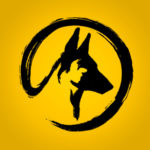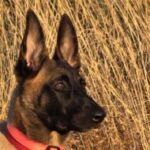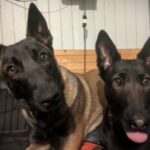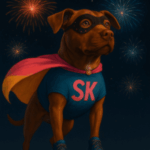Copy of Shelter Dog Training - Complete Course
-
Section 1: OVERVIEW & FUNDAMENTALS
Welcome Lectures16 Video Topics-
Course Agreement & Course Manual
-
Introduction & Mission Statement
-
The Genetic Makeup of the Dog
-
Pet Dogs vs Shelter Dogs
-
Why Dogs End Up in Shelters
-
Understanding Breeds
-
Shelter Mix Breakdown
-
Mitigating Injuries
-
Blueprint of Dog Drives
-
Using Treats / Food As a Reward
-
Engagement Training
-
Training Methods
-
Canine Body Language
-
Spatial Pressure
-
Correction vs Punishment Intro
-
Understanding Playgroup Basics
-
Course Agreement & Course Manual
-
Section 2: Introduction / TheoryCommunicating with Dogs1 Video Topic
-
Understanding the Genetic Makeup of the Dog1 Video Topic
-
What Makes Shelter Dogs Different2 Video Topics
-
The Anatomy of a Dog1 Quiz
-
Section 3: GETTING STARTEDThe Various Groups / Breeds of Dogs4 Video Topics
-
The Shelter Mix Breakdown1 Video Topic
-
The Blueprint of the Dog1 Video Topic
-
Anthropomorphism1 Video Topic|1 Quiz
-
Section 4: SafetyMitigating Injuries2 Video Topics
-
Canine Body Language1 Video Topic
-
Spatial Pressure1 Video Topic
-
Radius of Temperament1 Video Topic|1 Quiz
-
Section 5: The BASICS OF TRAININGBonding Through Training2 Video Topics
-
Luring and Shaping Behaviors5 Video Topics
-
Engagement Training4 Video Topics
-
Using Food as a Reward1 Video Topic
-
Different Training Methods1 Video Topic|1 Quiz
-
Section 6: UNDERSTANDING DOGS THROUGH TRAININGEngagement Training Continued5 Video Topics
-
Recall Training5 Video Topics
-
Corrections vs Punishment1 Video Topic
-
Long Line Training5 Video Topics|1 Quiz
-
SECTION 7: USING THE LEASH & LONG LINEHow to Use a Leash7 Video Topics
-
Long Line Training - Part 26 Video Topics|1 Quiz
-
Section 8: HOW TRAINING SAVES LIVESThe Canine Good Citizen5 Video Topics
-
Basic Obedience4 Video Topics
-
Teaching the Leave It Command4 Video Topics
-
The Place Command3 Video Topics|1 Quiz
-
Section 9: Building ConfidenceBuilding Confidence3 Video Topics
-
Touch Sensitivity1 Video Topic
-
Fear Aggression1 Video Topic
-
Progressive Desensitization1 Video Topic|1 Quiz
-
Section 10: Getting Dogs Around other DogsDog to Dog Introductions10 Video Topics
-
Leash Dropping1 Video Topic|1 Quiz
-
Section 11: Playgroup TrainingWhat is a Structured and Managed Playgroup2 Video Topics
-
Beginning and Structuring a Playgroup4 Video Topics
-
What Makes Playgrounds Safe vs Dangerous3 Video Topics
-
How Playgroups Benefit Dogs in Shelters2 Video Topics|1 Quiz
-
Section 12: Behavior ObservationsUnderstanding What You See5 Video Topics
-
Defining Behaviors3 Video Topics
-
Reading Dogs3 Video Topics|1 Quiz
-
SECTION 13: PROBLEM SOLVINGHigh Drive Dogs2 Video Topics
-
Mouthy Dogs1 Video Topic
-
Barrier Aggression Examples4 Video Topics
-
Fear Issues3 Video Topics
-
Leash Biting2 Video Topics|1 Quiz
-
SECTION 14: CORRECTIONS IN DOG TRAINING - Part 1Corrections Save Lives6 Video Topics|1 Quiz
-
Section 15: Corrections in Dog Training - Part 2The Proper Use of Corrections7 Video Topics|1 Quiz
Groups
-
active 6 hours ago
-
active 18 hours ago
-
active 18 hours ago
-
Member Forum
Latest updates

Andrew posted an update 2 days ago

Lamprini posted an update 3 days ago

Robert posted an update 3 days ago

Tommy posted an update 3 days ago

Tommy posted an update 4 days ago

Shawn posted an update 5 days ago

Liz posted an update 5 days ago

Tommy posted an update a week ago
Shelter Mix Breakdown Lecture
THE SHELTER-MIX BREAKDOWN
Since most of the dogs you will encounter in the shelter will be mixes, having a basic understanding of the breeds that make up the mix can give you some insight into the drives and personalities of the dogs you are dealing with.
There are small dogs, big dogs, thin dogs and large dogs. But for the sake of simplicity, we will break the larger categories into two classifications for this explanation. The Molossers and the Wolfee/herding dogs.
Molossers are a category of solidly built large dogs that descend from a common ancestor. The name derives from Molossia, an area of ancient Epirus where the large shepherd dog was known as a Molossus.
Typical characteristics of Molossers are heavy bones, pendant ears, relatively short and well-muscled neck, and a short muzzle. Examples of Molosser type dogs would include BullDogs, Mastiffs, SharPeis, PitBulls and even Greater Swiss Mountain dogs. They are used extensively for guard dogs because of their natural guarding instincts and their deep voices.
Their bodies are thicker and their movements are also more pronounced. Their style of interaction can be seen as more gruff and their style of play is also quite different from the Wolfee types.
Wolfee Types are dogs with longer noses, higher set ears, thinner/leaner more wolf-like bodies and drives.
They are agile movers and more predatory in their interactions with other dogs. They are likely to herd (chase and run down a target) instead of moving directly into a target. Their style of play is quite different from the Molossers in that they bark, tumble and enjoy grabbing their partners and wrestling them to the ground.
If not understood, this type of play can upset or instigate a dog that is not used to it.
Although this is a very broad generalization, it is important during our playgroup training to observe the differences in the style of interaction and play from these two groups. If the play is not understood, a safe option is to keep like-dogs with like-dogs, and structure different playgroups. Also, when adopting dogs into homes with other dogs, it will be a good idea to determine the shelter dog’s style of play and interaction with other types of dogs. The most valuable tool to do this with will be the playgroups.

